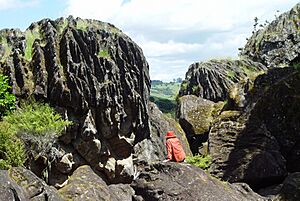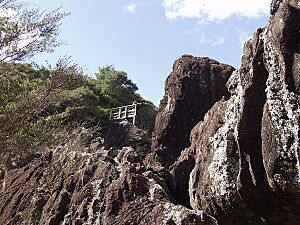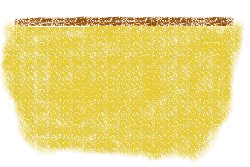Wairere Boulders facts for kids
 |
|
| Legal status | Company |
|---|---|
| Services | Visitor attraction, campsite, accommodation |
| Owners | Mark and Leonie Norton |
Wairere Boulders is a unique nature reserve and fun place to visit. It's located in Horeke, in the Hokianga area of Northland, New Zealand. This special spot is known for its amazing and rare rock formations. Visitors can explore different trails, climb on the boulders, kayak on the river, and even stay at the campsite.
Contents
Who Owns Wairere Boulders?
Wairere Boulders was first opened as a tourist spot by Felix and Rita Schaad. They were a couple from Switzerland who bought the land in the 1980s. They worked for four years to build tracks, bridges, and viewing spots. In 2000, they finally opened the site to visitors. The property was sold in 2017 and then again in 2023.
Mark and Leonie Norton bought the 140-hectare property in 2023. They have made some great additions for visitors. These include hot showers and a community barn. They also now welcome people who enjoy bouldering. The property also has farmland where they raise highland cattle and sheep.
Fun Things to Do at Wairere Boulders
The main reason people visit Wairere Boulders is to see the huge and unusual rock formations. These rocks are made of basalt and have cool, wavy patterns on them.
Exploring the Walks
There are several walking trails to choose from. Some walks take about 40 minutes, while others can take up to 2 hours. These paths lead you under, over, and around the giant boulders. The rocks are surrounded by a beautiful subtropical rainforest. Many of the plants here have labels so you can learn what they are. For families, there are also fun rock animals, tiny fairy houses, and a swimming hole to enjoy.
Kayaking Adventures
You can go kayaking on the river and estuary that flows through the boulders. Because the river is affected by the tides, kayaking times depend on the tide. It's possible to paddle through mangrove trees and out into the big Hokianga Harbour.
Bouldering Challenges
Bouldering is a type of rock climbing without ropes. Many local groups help with bouldering at Wairere Boulders. They have mapped and graded hundreds of the boulders on the property. This means they've figured out how hard each climb is.
How the Boulders Formed (Geology)
The Wairere boulders are special rocks that have slowly moved down hillsides. They came from an old lava flow that happened millions of years ago. Over time, the clay under the lava started to wear away, creating a valley. Big pieces of the lava cap broke off and slid down into the valley. Now, these boulders fill a part of the valley that is about 1.4 kilometers long and up to 350 meters wide.
Many of these boulders have deep holes and wavy grooves on their surfaces. These formed as the rocks slowly slid down the valley sides. This is a rare type of rock formation called karst on basalt. Usually, karst forms on softer rocks like limestone. But at Wairere, the hard basalt has been dissolved over thousands of years. This happens because of a weak acid from decaying leaves that collects around plant roots on top of the boulders. This acid creates the deep holes (called solution basins) and the wavy grooves (called fluting) on the rocks.
Basalt karst can be found in a few places in northern New Zealand. Wairere Boulders has some of the best examples. You can also see similar features on Norfolk Island in the Tasman Sea.
See also



